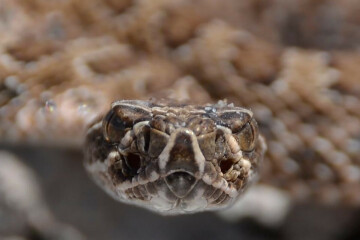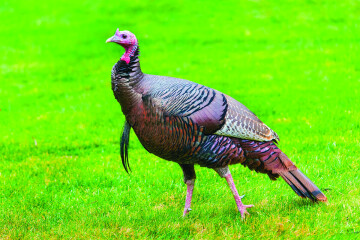Fond Memories of a Norwegian Wool Hat
Christmas morning, 1947. Something about the shape of that package under the Yule tree caught my eye. Call it intuition if you wish, but I had a feeling this gift was going to be a little bit special. Even though I was nearly sixteen, I unwrapped it in a flurry of excitement. And there it was, a grey, knit Norwegian wool hat.
It was a case of love at first sight. A folded piece of paper tucked into the sweatband by the manufacturer stated, “This exquisite piece of wear is crushproof, practically indestructible, guaranteed to give adequate protection from the elements and despite any rough treatment, still stylish enough to impress the ladies while walking your dog. And with a little luck, maybe her telephone number.”
I remember how I put the hat on, pulling it down to my eyebrows and parading around the house like a youngster with his first pair of cowboy boots. As a budding outdoorsman, I was not old enough to appreciate the fact that, like fine wine, a hat such as this needed proper aging.
That’s when I found a second note hidden in the sweat band.
Dear son:
To properly season your hat with the right blend of character and distinction, I would recommend the following treatment:
Mix several cups of pond water with a sampling of grouse, goose, turkey and duck feathers with three tumblers of top shelf bourbon, and a dash of gun cleaning solvent.
Stir gently and add one ripe crawfish, seasoned with a good sampling of grouse and elk droppings.
Soak the hat in the above conditioning brew for 48 hours and then place in a smokehouse for eight hours for proper curing.
Reshape the hat properly after drying, and garnish with a pheasant tail feather.
All my love, Dad
A broad grin washed over my face as I read his seasoning note, but I couldn’t really appreciate those words until I had tromped over Montana’s backcountry on countless hunting and fishing trips, accompanied by my faithful wool hat.
I remember the campfires that hat fanned into life on hunting and fishing trips, how it served as an insect capturing net to catch grasshoppers for fishing bait.
I can readily recall the adventures involving my wool hat from past outings stored in my memory banks – like the time I instinctively threw it at a coiled rattler that I nearly stepped on. And the time I used it to as a glove to separate a black lab and a brute of a Chesapeake engaged in a snarling fight.
Many pleasant memories are woven into the wool fibers of my trusty companion, along with a few unpleasant recollections – such as the striped skunk confrontation near Willow Creek in southeastern Montana many decades ago. Pushing my gun ahead of me while crawling under a barbed wire fence, I came face to face with a family of skunks that emerged from a willow patch. Time seemed to stand still at this precarious moment. A couple of horses in the adjacent pasture lifted their heads in anticipation of events to come, and a yellow warbler on a nearby willow branch stopped singing. It was a moment of decision, and I made the wrong move.
Scrambling hastily backwards, my pants got snagged on a fence barb. As I struggled to free myself with legs flailing and arms churning trying to free myself, four skunks – an adult female and three youngsters – put their backsides to use and all eight guns fired tear-watering, stinging acrid fluid salvos at pointblank range. With eyes burning and lungs screaming for a breath of fresh air, I freed myself from the barbed wire and scrambled back to my pickup, bellowing and cussing every step of the way. A full plastic jug of water poured over my face and upper body helped considerably, but time would be my only salvation.
After returning home, I tossed my clothes in the outside garbage can, but didn’t have the heart to say good-bye to my most cherished possession. The hat was temporarily retired to a bucket filled with a mixture of tomato juice and ammonia, rinsed and then hung in the garage for a three-week period of recuperation before it was again ready for service.
The following year, my hat and I shared the great horned owl encounter. On a warm March day, I decided to shimmy up a cottonwood tree to check on a newly discovered owl’s nest. I had climbed about 25 feet when one of the parents glided past and landed in a nearby tree. There it sat, staring at me with large, yellow eyes and swaying from side to side with wings partly spread, looking as big as a stuffed potato sack. The picture of savage rage was completed as the owl furiously snapped his beak. Feeling a touch of apprehension, I continued climbing as the owl’s mate flew in; soon there were angry outbursts from both. The feathered projectiles flew from tree to tree, zooming past me and constantly hooting deep, subdued tones.
When I reached the nesting cavity, I felt the swoop of powerful wings. Then a savage blow to my shoulder almost knocked me off the tree. Next, I felt a terrific stab of pain on top of my head, which dazed me and sent my wool hat spinning to the ground. After the attack, I half slid and half fell down the side of the tree to the forest floor. When I gently probed the top of my head to check for damage, I found two ugly wounds. I’m certain the owl’s talons would have inflicted more serious harm if it had not been for my woolen hat.
That same year, my faithful possession played an important role in bagging a nice five-point buck. During the last week of the hunting season, four of us boated to a large island on the Yellowstone River in eastern Montana to hunt whitetails. We drew straws to determine who the deer drivers and standers were going to be. I lucked out in drawing one of the standing positions, where I would wait for the drivers to “push” the deer toward the standers.
After trekking around the outside of the island to select my standing position, I waited for the drivers on the far side of the island to start their walk driving the deer, hopefully, toward me. At my site, two well-traveled deer trails about fifty yards apart came down to the river’s edge. One led into a thick stand of willows; the other angled off in a westerly direction. There is nothing like making a firm decision when selecting a deer stand. Any uncertainty about your choice gnaws at you; in time, you become uneasy and wander off, seeking a better spot.
When I pushed my hat back and rubbed my forehead to make a decision, I knew I had the answer. My dad had once told me of an old trick that sometimes worked in bagging a wary buck. I walked over to the trail leading to the willow patch, removed my hat and placed it on a willow stub about four feet off the ground. Then I walked over to the other trail and positioned myself.
When the drivers started walking towards me, I heard the sound of a deer running though the cottonwoods. A few seconds slipped by, then I glimpsed a buck running full throttle in my direction. Suddenly he stopped short, perked up his ears, and looked back at the sound of the oncoming drivers. After pausing for a second or two, he was on the move again, bounding down the trail that would take him to the willow patch, and security.
When the massively-antlered buck saw the hat fluttering in the breeze, he tried to reverse gears, skidded to the ground and ended up on his backside with legs pawing the air. In a second, he was up on his feet, this time running in my direction, white tail flashing. I swear I can still see the bewilderment in his eyes as he raced toward me in majestic splendor.
There eventually comes a time when all good friends must depart. What happened to my old wool friend was entirely my fault. Its demise occurred after I had carelessly placed it on our backyard picnic table. My young lab, with zestful gusto, pounced on it and reduced it to a tattered heap of shapeless wool. Since that tragedy, I have felt half-naked and incomplete during my outdoor sojourns.
I am, however, optimistic about the future. Christmas is right around the corner. Surely, with an understanding of family members and friends, there just might be a fair chance of finding a special Christmas package under the tree. And, who knows, it might even contain a grey Norwegian wool hat.





